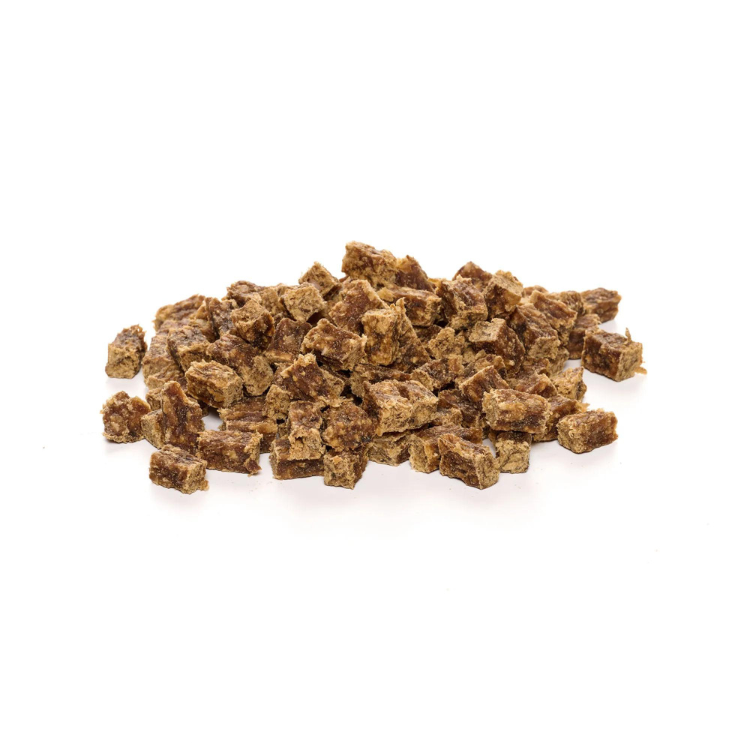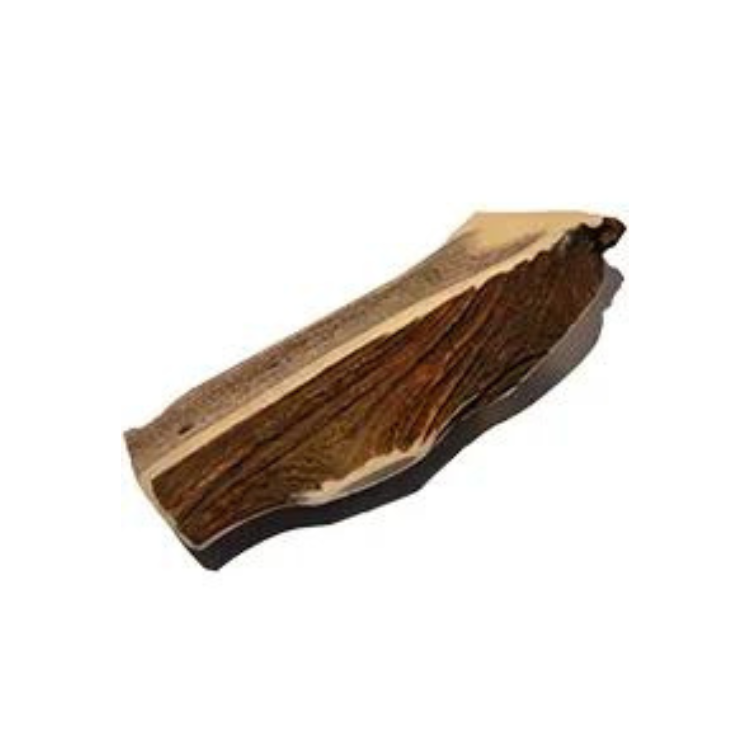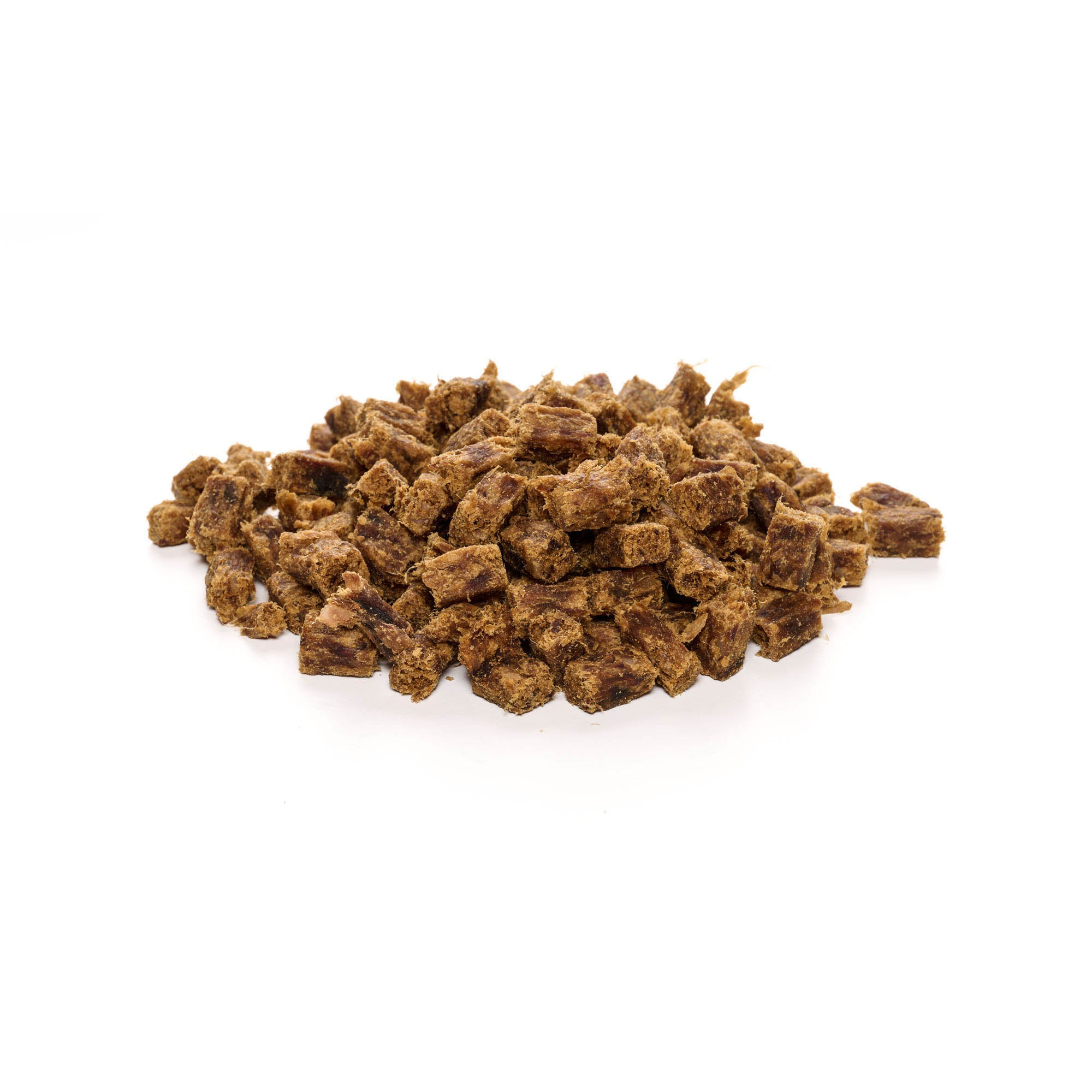
How do dogs see? See the world through puppy eyes
Share
For our domestic dogs, optical perception is of secondary importance, if at all. Their visual abilities date back to the time when dogs were primarily hunters and "wolves". To be successful in hunting, they had to be able to see well in the twilight and, above all, to quickly recognize movements. Seeing colors in all their detail, on the other hand, was never particularly important or advantageous.
Contents: How do dogs see? Seeing the world through dog eyes
- How is the dog’s eye constructed?
- Dogs see better in the dark
- What colors do dogs see?
- Move – so your dog sees you
- More overview – the field of vision of dogs
- Conclusion
How is the dog’s eye constructed?
If you take a closer look at the structure of a dog's eye, it actually looks similar to that of a human. The eye is surrounded by the upper and lower eyelids as well as the nictitating membrane, which is located in the lower eyelid.
The nictitating membrane is still present in our eyes, but only as a small remnant of connective tissue, which you can see in the inner corner of your eye when you look in the mirror.
The dog's visual organ is surrounded by the white sclera, which merges into the transparent cornea at the front. Behind this is the iris with the pupil. The retina contains the photoreceptor cells that are sensitive to light. A little higher up is the macula, the area of sharpest vision, including in our dog.
The differences to the human eye mainly concern the back of the eye. In addition to a very fine network of nerve tissue, the retina also contains two different types of light receptors: cones and rods.
While the rods on the retina are responsible for light sensitivity and light-dark perception, the cones are responsible for color recognition and sharp vision. Dogs have many more rods than we do.
Reward your best friend with our dog treats!
Dogs see better in the dark
Since dogs have many more light-sensitive rods in their eyes, they can see more clearly and better in twilight and in the dark than we humans can. They simply need less light to see well.
With the help of the so-called tapetum lucidum, a special reflective layer located in the area of the retina, the incoming light is also amplified. This also causes the typical reflection of the eyes of nocturnal animals when they are illuminated in the dark.
You've probably experienced this when driving at night! Dogs actually see just as well during the day as they do at night. However, there are dogs in which this layer is reduced or even completely missing.
It is assumed that these dogs – e.g. Australian Shepherds or Catahoulas – do not cope as well in the dark as their counterparts without this genetic defect.
What colors do dogs see?
However, dogs only have two different types of cones. These are responsible for seeing blue-violet and yellow. Dogs cannot perceive the colors red or green like we humans can.
They are, if you will, red-green colorblind: red looks like yellow to them, they can't see green at all, and purple just looks grey. When you play with your dog in the garden, you have to remember that a red toy on a green lawn will only stand out clearly to us humans. However, dogs can see and distinguish between blue and purple objects.
A blue ball during play is therefore much easier to see! A guide dog cannot correctly interpret the signals of a traffic light based on the colors alone. He probably uses other orientation aids such as the position or the different brightness of the signals.
However, dogs can differentiate between different shades of gray much better than humans. Overall, your dog sees the world less colorfully than you do.
Move – so your dog sees you
Dogs are naturally designed to sort objects according to importance. They are somewhat short-sighted and are less able to perceive objects that are not moving.
The dog's eye is designed to scan the horizon for movement. As soon as an object moves, they can therefore see it very well even from a distance, ie as soon as a prey animal flees.
Discover delicious dog snacks directly from our range!
This also explains why wild animals usually stand rooted to the spot when they see dogs or wolves. This is their best chance of not being seen. It can be said that dogs hardly notice anything that is standing still. A moving dog owner is therefore a great help to the dog.
How dogs perceive movement is also influenced by their individual skull shape.
The visual system is different in short-headed dog breeds compared to dogs with a long, narrow snout: the zone of sharpest vision does not extend over the entire retina, but is concentrated on the so-called yellow spot, as in humans.
Short-headed dog breeds such as the pug can see and focus on movements that occur at a short distance directly in front of their eyes more clearly than dogs with long heads. However, movements that occur in the corner of the short-nosed dog's eye or at the edge of its field of vision are only visible to a limited extent.
In contrast, sighthounds such as the Greyhound , Azawakh or Borzoi have a wider field of vision, which allows them to spot and track fast-moving objects even from a greater distance. This ability makes them excellent hunters, as they hardly have to turn their heads to keep an eye on their prey.
More overview – the field of vision of dogs
Similar to the macula, the area a dog can see depends on the shape of his skull and also the position of his eyes.
Dogs have a large field of vision that can extend up to 240 degrees, while humans have a maximum field of vision of 180 degrees. This makes it easier for dogs to search a large area for prey.
However, this means that spatial perception is not as good as in humans. The longer the head and the more sideways the eyes are, the larger the field of vision.
However, this means that they lose spatial vision. With round heads and short noses, the field of vision is significantly smaller.
Conclusion
In summary, compared to human vision, dog vision is limited in terms of depth of field, color vision, accommodation (the adjustment of the eye to a distance) and visual acuity.
Qualities such as seeing in poor lighting conditions, perceiving movement, expanding the field of vision and differentiating between shades of grey are much better developed in dogs.
In everyday life or when playing with your dog, it is also extremely useful to look at the world through a dog's eyes every now and then. If you want to do your dog a favor, choose blue toys, which he can see best and can also easily distinguish visually on a meadow.
The dog may not recognize red-marked contact zones or a red tunnel during agility until he is standing directly in front of them. And if your four-legged friend doesn't notice you right away, you may simply not have moved yet.
If you sometimes don't understand how your dog reacts and what he perceives, change your perspective and simply take his point of view!
Make your dog happy with our tasty chews!















